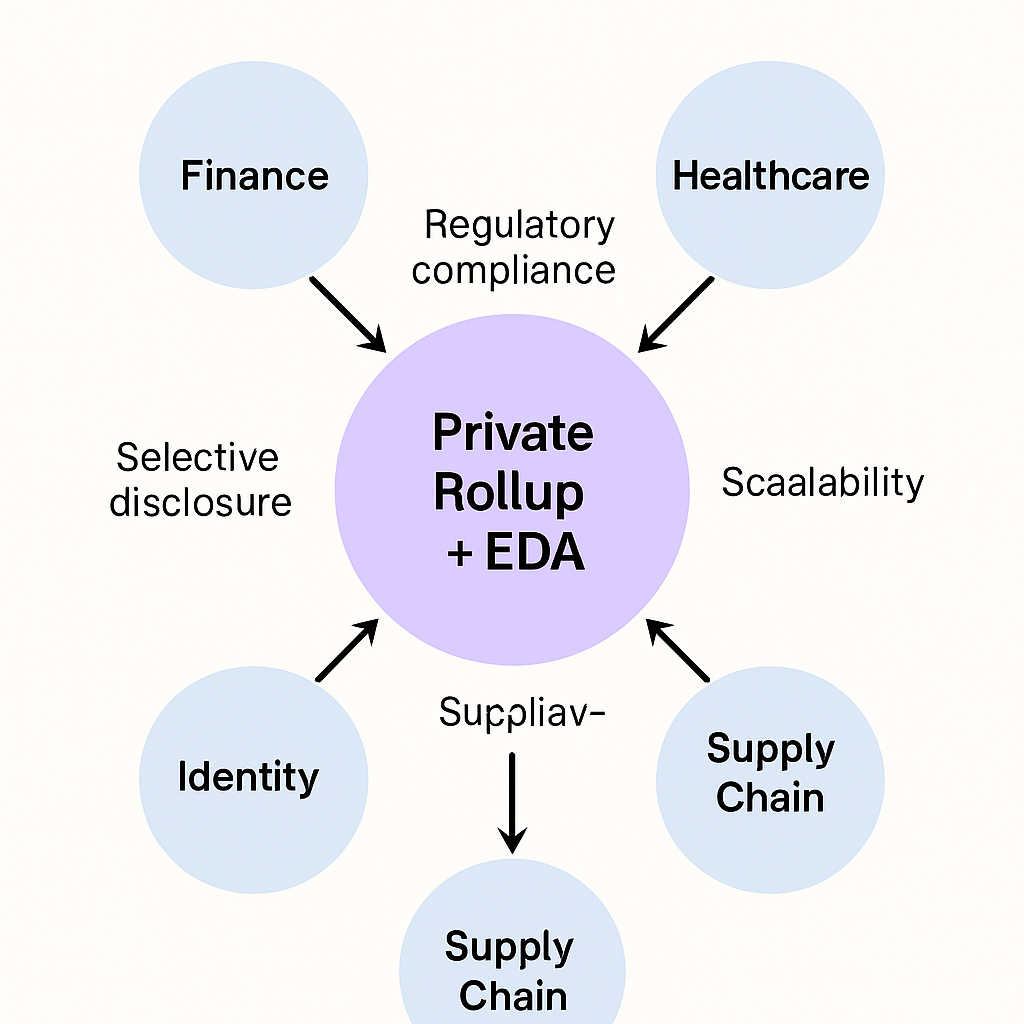Implementations, Use Cases, and Future Outlook
The final module connects theory to practice by showcasing current deployments such as Avail Enigma and Walacor, along with potential applications in finance, healthcare, identity, and supply chains. It addresses deployment challenges, including key management and interoperability, and looks ahead to future trends like danksharding, shared sequencers, and fully homomorphic encryption.
Current Implementations of Encrypted Data Availability

The concept of encrypted data availability has moved beyond theoretical proposals and into production‑level deployments. The most prominent example is Avail’s Enigma upgrade, released in 2025, which introduced encrypted blob support to its existing modular data availability network. Enigma allows rollups to publish encrypted transaction data while maintaining the same verifiable sampling techniques that underpin Avail’s public offering. This innovation enables privacy‑preserving rollups to share infrastructure with public rollups, reducing costs and encouraging ecosystem-wide adoption.
EigenDA, developed as part of the EigenLayer restaking ecosystem, has also begun experimenting with privacy features. While not fully encrypted by default, EigenDA is designed to support future extensions where validators handle encrypted data commitments in parallel with restaked security guarantees. Similarly, Walacor’s permissioned data availability model has emerged as an enterprise‑focused alternative. Unlike Avail’s public design, Walacor operates with a consortium-based approach where validators are pre‑approved entities, and encryption is combined with access control lists to enforce strict data handling policies.
These implementations differ in philosophy. Avail aims to maintain openness and composability, offering encryption as an optional layer on top of a public infrastructure. Walacor prioritizes controlled environments, making it suitable for financial institutions or government agencies that prefer permissioned ecosystems. EigenDA occupies a middle ground, extending public infrastructure with restaking incentives and modular privacy options. Together, these approaches illustrate the diversity of solutions evolving to meet varying demands for confidentiality in modular blockchains.
Real-World Use Cases for Private Rollups
Private rollups built on encrypted data availability are particularly well-suited for industries where sensitive information must remain confidential without sacrificing the integrity guarantees of blockchain verification. In financial services, private rollups can facilitate interbank settlements or syndicated lending platforms where transaction details must remain hidden from competitors while still provable to regulators. By encrypting data at the availability layer, institutions can achieve near‑real‑time settlement and reduce counterparty risk without exposing proprietary trading strategies or client information.
Healthcare is another compelling domain. Patient records, clinical trial data, and insurance claims are highly sensitive and subject to strict privacy laws. Traditional blockchains cannot be used to store such data in plaintext. A private rollup using encrypted DA allows healthcare providers to maintain an immutable audit trail for compliance and research purposes while ensuring that only authorized practitioners can access patient information.
Identity and credential systems also benefit from encrypted availability. Decentralized identity solutions often require proof of attributes, such as age or citizenship, without revealing the underlying personal data. Encrypted DA supports this selective disclosure by ensuring that the raw data is never publicly exposed, yet commitments to that data remain verifiable.
Supply chain management, corporate governance, and government services represent additional frontiers. A supply chain consortium could run a private rollup to track shipments and certifications across borders without leaking competitive details. Government agencies could issue and manage permits or voting systems with public verifiability but restricted access to voter or applicant information.
Challenges in Deployment
Despite its advantages, implementing private rollups with encrypted data availability introduces significant operational challenges. The most immediate issue is key management. Enterprises must decide whether to centralize control under a single custodian, distribute keys among consortium members, or adopt threshold cryptography. Each approach carries trade‑offs between security, coordination, and regulatory compliance.
Another challenge is interoperability. Public rollups thrive on composability; assets and contracts can move seamlessly across networks. Introducing encryption complicates this dynamic, as encrypted data cannot be easily shared or bridged without revealing sensitive information. Emerging standards for encrypted blob formats and zero‑knowledge bridging protocols may address this issue, but they remain in early stages of development.
Regulatory clarity is also evolving. While encrypted DA aligns with privacy requirements in many jurisdictions, regulators may require guaranteed access to certain data under legal mandate. Designing systems that satisfy both privacy and lawful disclosure obligations is complex and often jurisdiction‑specific, necessitating close collaboration between developers, compliance teams, and legal advisors.
Finally, there are cost considerations. Encryption and key management add overhead to the already complex rollup pipeline. Although specialized DA layers like Avail and EigenDA optimize for scale, enterprises must still evaluate whether the performance and cost trade‑offs align with their business needs.
Future Outlook and Emerging Trends
The trajectory of encrypted data availability suggests it will become a foundational element of modular blockchain design over the next several years. As enterprise adoption grows, privacy will shift from an optional feature to a baseline requirement. This evolution parallels the broader movement toward hybrid public‑private ecosystems, where institutions seek the benefits of public security and composability without sacrificing confidentiality.
One significant development on the horizon is the integration of danksharding and blob‑carrying transactions into Ethereum’s roadmap. These upgrades will dramatically increase data throughput for rollups and may inspire similar privacy‑enhanced sharding models across alternative Layer 1 ecosystems. As encrypted blobs become standardized, interoperability between different DA layers, public and permissioned, will become feasible, allowing private rollups to bridge and interact with public DeFi ecosystems without exposing sensitive data.
Shared sequencer architectures are another emerging trend. By decoupling sequencing from execution and availability, multiple rollups, both public and private, could coordinate ordering and reduce cross‑domain latency. Encrypted DA fits naturally into this model, as sequencers can handle encrypted batches without knowledge of the underlying contents, enabling fair ordering mechanisms that preserve privacy.
Finally, advancements in cryptography such as fully homomorphic encryption (FHE) and multi‑party computation (MPC) may further enhance EDA capabilities. These technologies promise selective computation on encrypted data, allowing complex validations or analytics without ever decrypting the underlying information. If successfully integrated, they could transform private rollups into fully confidential yet interoperable execution environments, bridging the final gap between privacy and composability.





